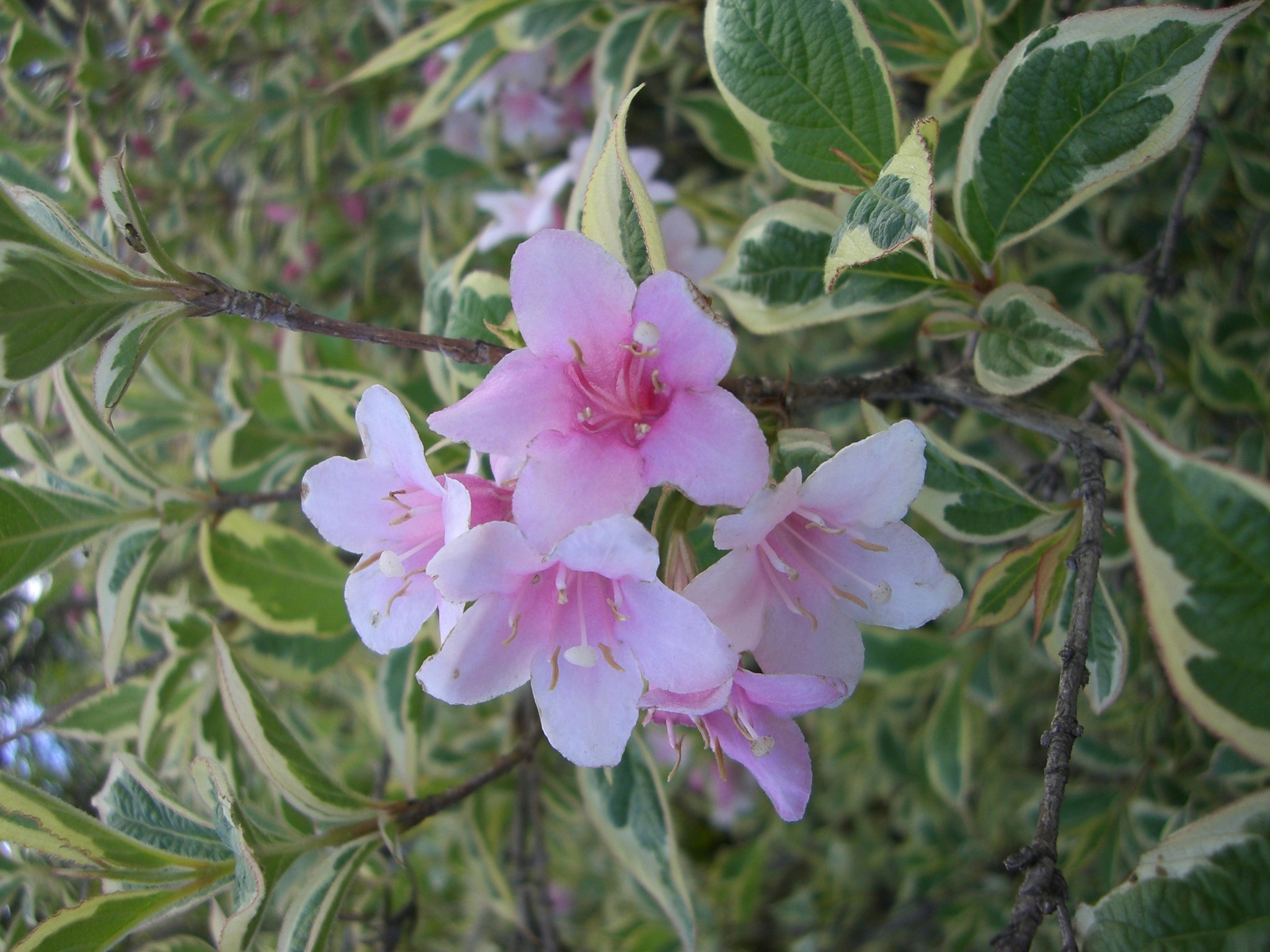
Shrubs mostly 2-3 m tall. Branchlets hairless or with longitudinal lines of hair. Leaves to about 8 cm long, 3-4 cm wide, ovate to oblong or obovate, saw-toothed, long-pointed and with hair on the veins below; stalks short. Flowers solitary; spring to summer. Calyx with sepals lanceolate and long-pointed, to about 12 mm long, split to about halfway. Corolla funnel-shaped, to over 4 cm long, pale to deep pink, carmine or red. Fruit capsules cylindrical, to 2.5 cm long, containing slightly winged seeds. [W. rosea Lindl.]
Japan, Korea, N China
Other species that are occasionally offered include the following:
W. coraeensis Thunb. from Japan has pale pink flowers darkening with age, hairless stems and leaves, and linear sepals that are cut to the base. [W. amabilis van Houtte].
There are 2 yellow-flowered species occasionally offered: W. middendorfiana (Carrière) K. Koch from Japan and N China, which has stalked flowers with the narrowed portion of the corolla shorter than the inflated part; and W. maximowiczii (S. Moore) Rehder from Japan, which has flowers that are hardly stalked, the narrowed portion to about 2 cm long and longer than the inflated part.
Source: (2002). Caprifoliaceae. In: . Horticultural Flora of South-eastern Australia. Volume 4. Flowering plants. Dicotyledons. Part 3. The identification of garden and cultivated plants. University of New South Wales Press.

Flowers white, becoming pale pink.
Often treated as a botanical variety or form.
Listed as early as 1861.
Weigela florida 'Foliis Purpureis'
Dwarf shrub with leaves suffused maroon-purple. Flowers dark pink with deep purple ovaries. ['Purpurea']
Arose in France, developing from a batch of Chinese seed c. 1921.
Flowers deep pink. Leaves mostly with creamy margins. ['Aureovariegata', 'Variegata Aurea']